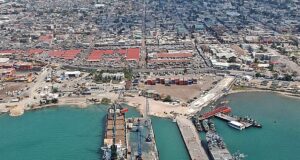August 12th, 2017
By Davis Florick – Senior Fellow
China’s announced increase in its defense budget for 2017, only seven percent growth compared to double-digit increases over much of the last two decades, attests to the shifting landscape in Chinese defense strategy and force structure. Over the last seven decades, the People’s Liberation Army (PLA) has undergone significant changes. It has transitioned from one heavily focused on conventional infantry operations with limited technological capabilities to one emphasizing informatized operations. Along the way, China’s defense reforms have reflected leadership changes and perceived evolutions in the security environment. Moreover, Beijing has made a substantial financial commitment to shape its manpower and capabilities for twenty-first century operations. The reduction in annual defense spending increases, which were running at ten percent a year as recently as 2015, raises intriguing questions about how China perceives its position in the current security environment and Beijing’s defense posture. Understanding how and why China has changed the PLA’s approach to warfare is important for understanding the country’s defense policy and its possible future implications.
Once the People’s Republic of China (PRC) was founded in 1949, and for nearly a half century afterwards, the PLA force structure and manpower were shaped by the Chinese Civil War and World War Two. Therefore, the military emphasized larger and more lightly equipped formations with the belief that Chinese manpower and speed could overwhelm more advanced militaries, and in many ways, this operational doctrine was effective in the Korean War. However, in the 1970’s, as China began opening up to the US, China’s wider deficiencies became glaringly noticeable. Given Beijing’s finite budget, Deng Xiaoping chose to prioritize civil and economic investments over defense spending: His prior career as a PLA officer afforded Deng the credibility to reject PLA budget requests in favor of more needed economic reforms. However, as the Long March generation exited leadership positions, the Chinese Communist Party (CCP) decision makers had a more difficult time denying PLA requests.
Jiang Zemin inherited a far different premiership then his predecessor Deng Xiaoping held. Without any military background, he was much less able to justify delaying defense spending. Furthermore, during the First Gulf War, the US demonstrated the mounting gap between Washington’s doctrinal and operational framework and that of its adversaries, many of which, including Beijing, followed variations of concepts Moscow had developed during the Second World War. When China attempted to coerce the Taiwanese into voting for a more pro-unification party during the island’s 1996 elections, the US’s ability to influence Asia-Pacific affairs was made stark by the presence of the Fifth and Seventh Fleets. This combination of circumstances justified PLA budget requests and led Jiang Zemin to promise matching increases in defense spending and gross domestic product (GDP) growth. Therefore, China’s military budget would benefit proportionally from economic gains.
Thanks to two decades of vigorous reform of strategic, operational, and tactical art, policy makers and strategists in Beijing appear more willing to pursue force projection and escalation control activities. Over the last decade, China has increasingly asserted its sovereignty over maritime territorial issues in the East and South China Seas and within the last few years has begun pressing India’s claim(s) on their mutual border. Party and PLA personnel, as well as academics and other experts, have asserted that this territory – and others – are part of a “Greater China” with origins in antiquity. To assert its expansionist claims, PLA policy and strategy are branching out into force projection concepts – nearly foreign to earlier generations shaped by the Chinese Civil War. A feature known as “peripheral defense” calls for the PLA to gain rapid victory in a regional conflict, thereby denying potential adversaries the space and time needed to mount a sufficient counterattack. Changes in the international security environment and Beijing’s rising defense spending puts the PLA in a position to consider how it could present potential adversaries with a fait accompli in a regional conflict.
In adding capability and credibility to its policy and strategy reforms, China has invested in a comprehensive range of technologies and substantially altered its manpower composition. Its modernizations run the gambit from conventional to nuclear, cyber to space, and a host of other assets. In many cases, for instance advanced diesel-electric attack submarines and anti-ship missiles, Beijing’s investments are intended to prevent opponents from defeating China in a regional conflict. As with these two weapons systems examples, PLA programs are designed to be more affordable than the assets they might be used against: aircraft carriers and forward bases for instance. Matching China’s new capabilities with commensurate intellectual capital is important. Therefore, over the course of nearly four decades, Beijing has reduced the size of its forces in favor of a better educated and leaner footprint. Stemming from the PLA’s technical and intellectual capital investments, Chinese senior officials and military planners can threaten to impose such high costs that an adversary may be deterred from intervention altogether.
Domestically, China’s tapering of defense spending increases over the last two years may be prudent given the economic slowdown. When Beijing’s economic growth was strong, marked by regular double-digit increases in GDP, the CCP’s leaders could afford to spend lavishly on the PLA. However, domestic discontent over other issues, such as social inequality – already growing over the last few decades – has been bolstered by the current economic downturn. As a result, Beijing’s budget may be better spent on additional economic and social reforms as the government seeks to curtail obstacles to growth. Furthermore, Xi Jinping likely has more credibility and personal authority with the PLA than Jiang Zemin or Hu Jintao. Xi’s father, Xi Zhongxun, was a leader in the CCP during the civil war and early PRC period when Party members held both political and military roles. Xi Jinping himself was an adjutant for the Secretary-General of the Central Military Commission, Geng Biao, early in Xi’s career. His background likely makes Xi the ideal man for offsetting needed economic and social reforms with reductions in defense spending rises.
Beijing’s standing throughout the region has also created an opportunity for a reduction in the PLA’s budgetary growth. When Jiang Zemin first established the parameters that made double-digit spending increases possible, China was in a more vulnerable position. Neither its air force nor its navy were positioned to pursue offshore operations of any significance. The Clinton Administration’s free hand to send two carrier battle groups to the waters off Taiwan perfectly illustrated China’s woeful maritime capabilities. Today, if a conflict were to emerge in the East or South China Sea, Beijing would present a considerable challenge to Washington. China’s defense advancements are also demonstrated by the noticeable prioritization of defense spending and cooperation among states such as Australia, India, Japan, and Vietnam. Each of these actors find themselves in a similar role as China did in the 1990’s, facing a potential adversary with significant qualitative and quantitative military advantages. With a stronger position in the region, China can afford to reduce defense spending increases in the interests of priorities intended to ensure long term growth and stability.
Changing defense spending in Beijing raises significant questions regarding potential reforms the Xi Administration may be considering for the coming years. Recognizing that China’s increase in defense spending matches its GDP growth – both are slowing – would also suggest that in another year, if Beijing’s economy improves by double-digits, defense spending may receive a similar bump. Simultaneously, after years of reducing manpower, the impact of cutting personnel by over half may finally be paying dividends. Only time will tell, but China may find itself in a better position to invest in new capabilities and more qualified personnel in a quality over quantity approach. Additionally, having established fortifications in the South China Sea and having developed a range of systems to support its peripheral defense strategy, the PLA may be more selective in how it invests. Ultimately, now that China is in a stronger regional position, its defense spending may be relaxed to a level that enables it to promote its interests without the risk of increasing tensions.
That a reduction in the PLA’s budget increase, to only seven percent in 2017, is noteworthy as it perfectly indicates the developing Chinese military situation. Especially over the past three to four decades, Beijing has transformed its military strategy and force structure. Starting with Deng Xiaoping, the CCP leadership recognized the PLA was bloated. The US victory in the First Gulf War, US involvement in the 1996 Taiwan Strait Crisis, and performances in subsequent conflicts demonstrated Washington’s ability to project power abroad and use information technology as a force multiplier. Particularly over the last two decades, since Jiang Zemin’s agreement to increase the PLA budget in line with GDP growth, the military has significantly improved qualitatively. Xi Jinping’s willingness to reduce defense spending increases in recent years raises several intriguing possibilities. His decision may simply be meant to conform with the plan set forward by Jiang Zemin. However, more gradual increases could also suggest China is concerned with other spending priorities or that it feels the PLA is better suited for regional conflict. The former would be instructive of the mounting domestic challenges Beijing faces. The latter would only further attest to the changing Asia-Pacific security dynamics. Regardless, the PLA’s seven percent growth in spending raises important questions about the Xi Administration’s perspective.
 Human Security Centre Human Rights and International Security Research
Human Security Centre Human Rights and International Security Research



